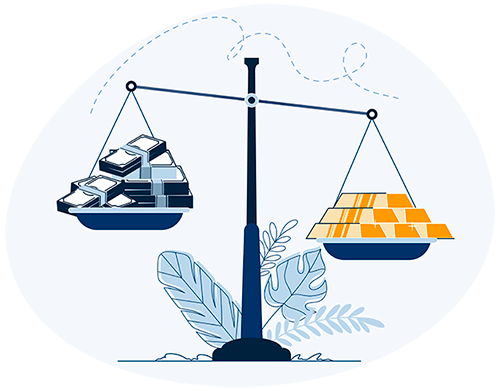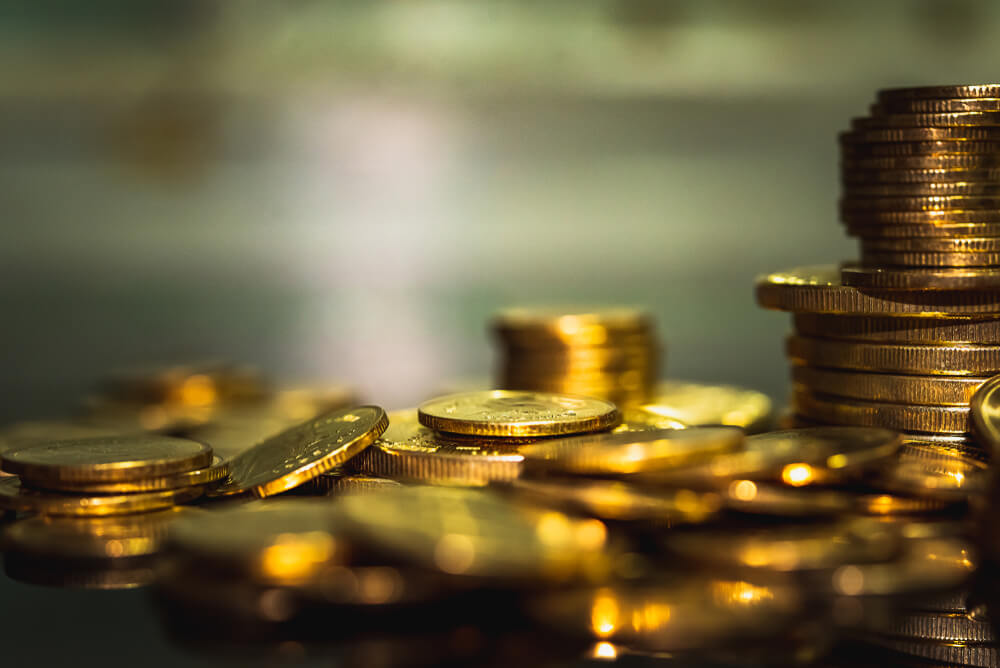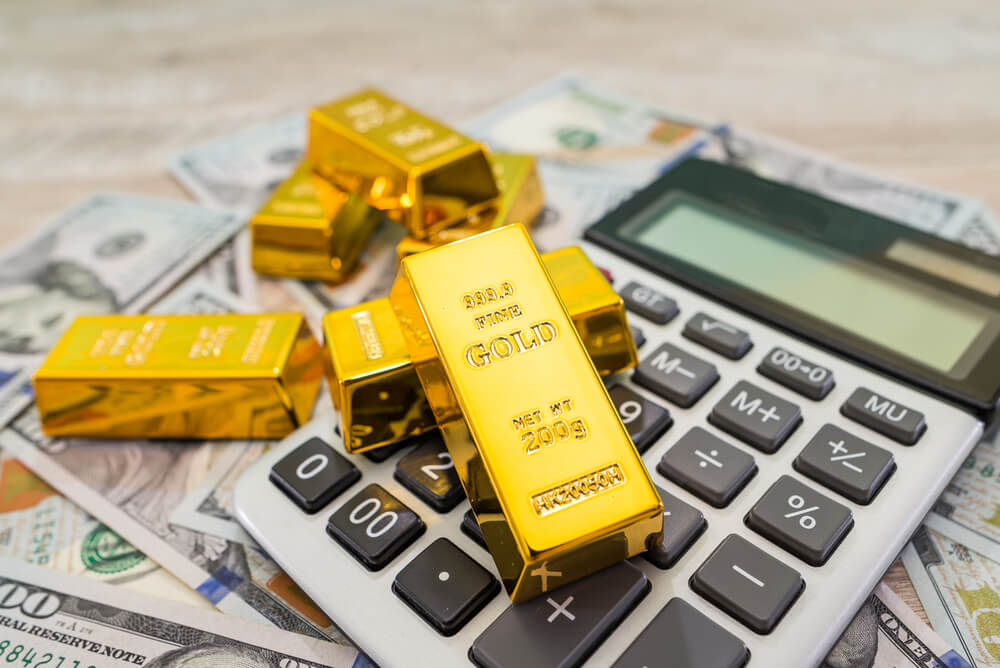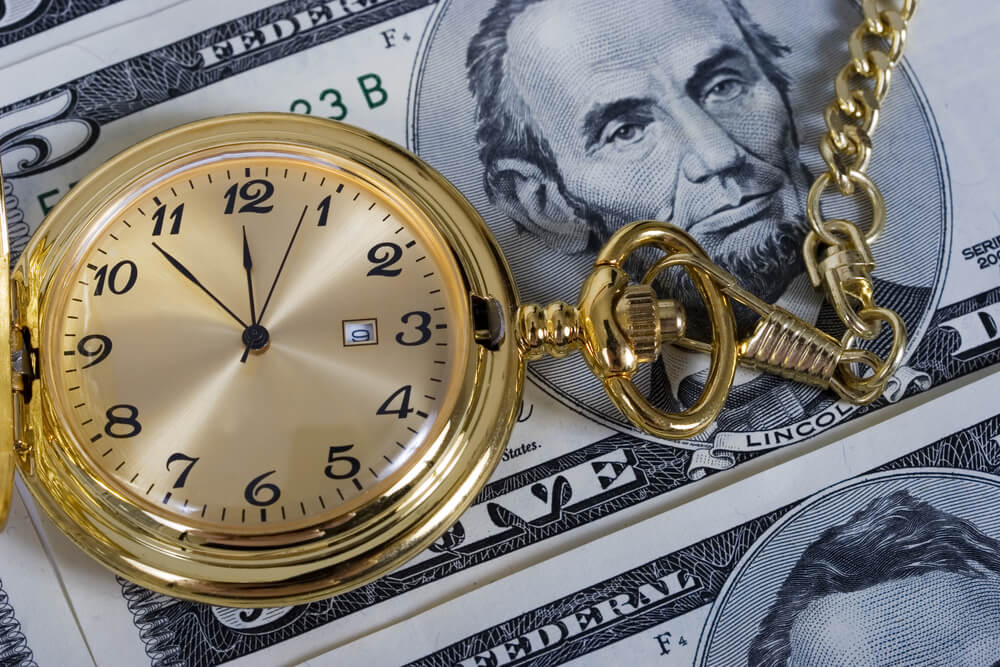
How Can You Detect Counterfeit Gold Coins?
Gold bullion coins have been around for centuries. Their imitation versions or fake gold coins have been doing the rounds for as long too. Counterfeit gold coins first surfaced in 600 BC.
The issue with fake gold coins isn’t that they exist, but they’re getting passed around as the real deal. Buying counterfeit gold coins for pure gold coin money can be a tough pill to swallow. And if you bought them in hordes with your hard-earned money, the financial loss incurred could be debilitating. All kinds of gold coins have fake versions, not just popular ones.

When buying gold coins and bars, ensure a reasonable price and gold purity. How do you steer clear of fake coins and find out the gold coin(s) you own? Keep reading for answers.
In this article, we’ll discuss the following to make your job easier:
- What are counterfeit gold coins
- The types of phony gold coins
- Detecting counterfeit gold coins
- How to steer clear of fake coins at the buying stage and more
This article not just helps you detect a fake gold coin but talks about all things related to counterfeit gold coins so that the need to check if the gold coin you bought is real never arises. Keep reading to save money, time, and hassle whenever you buy gold coins.
Table of Contents
What is a Counterfeit Gold Coin?
Any coin that’s not gold but portrayed as gold is a fake gold coin. Such coins are not regulated. They are made illegally without the consent or knowledge of the issuing organization or country. In some countries, however, replicating famous coins, mainly other country gold coins, is a state-sponsored and thriving business.
What is a fake gold coin made of? The coin’s base or core is usually non-precious metals like copper, iron, brass, or other metals. The uppermost layer is a thin layer of gold. The gold content is usually 2 to 3%. A pure gold coin must be more than 90% gold. 24-karat gold coins are 99.99% gold.
Read more:Gold Purity Measurements
Centuries ago, fake gold coins were made by shaving off the top layer of a real gold coin or article and using it as a cover over base metal coins.
Do note that there’s a difference between fake and deceptive gold coins. Unlike a fake or counterfeit, the true identity of an ordinary coin made to look like gold is revealed by the seller. But because the looks are deceptive and could get passed around or resold as fake, the line between counterfeit and misleading gold coins is blurred.
Types of Counterfeit Gold Coins

Counterfeit gold coins could be categorized based on how they are struck or their designs. The counterfeits get primarily classified as the following:
Struck Counterfeit
Counterfeit gold coins are struck the way how real gold coins are produced. A planchet is placed between two coining press dies. The fake gold coin manufacturer replicates the original coin’s design onto the coin dies through manual engravings, spark erosion, plating, engraving lathe, impact technique, etc.
This coining press technique employs loads of pressure to produce the fake coins. The method helps create some of the most accurate-looking or highly deceptive counterfeit coins. But it’s also a resource or capital-intensive process that most fake coin manufacturers avoid due to non-feasibility.
Generally, the highly popular or valuable coins are produced with the struck counterfeit technique. Less popular coins could also be faked with this method, but that’s rare.
Cast Counterfeit
The cast counterfeit method entails creating the genuine coin’s mold with a host coin and using the mold for casting fake coins. Many artificial coin makers prefer this method because it’s simple, straightforward, and doesn’t damage the host coin.
The fake coin-making process begins with pouring the molten base metal into the molding. A centrifuge could be used to ensure all the space within the mold is occupied with the molten metal. The counterfeits are low-quality replicas, or the coins can be easily detected as fake. As a result, high-value, premium coins are usually not cast-counterfeited.
Altered Coin
An altered or doctored coin is a cheap and quick method to make a counterfeit coin look vintage and profit immensely from the falsified rarity.
The modus operandi entails the counterfeiter buying a fake gold coin modeled after an ancient coin, like the ones minted a hundred or more years ago, and then adding specific attributes that make the coin look rare or unique.
A few coins from the regular production batch may have an added letter or symbol on their front or obverse side, deeming them unique and more valuable. Fake altered coin makers look for such idiosyncrasies in old coins and incorporate those oddities into their replica versions so that their counterfeit coins look like they’re worth a lot more.
Instead of adding specific quirks, some fake coin manufacturers could remove a particular detail to increase the coin’s value manifold. Some people break two coins apart into two halves and attach one half of a coin with the other coin’s half with glue. The two halves are usually the reverse and obverse sides of the respective coins.
The result is a unique-looking piece that can potentially sell for more money. These coins could be real gold at times but are mostly fake.
How to Detect Counterfeit Gold Coins?
Some counterfeit coins are very obvious and can be found with a glance. But most aren’t. In such scenarios, you must carry out a few easy tests at home to ascertain authenticity. The following are standard counterfeit coin detection methods:
Visual Inspection
Before delving into the scientific methods, start with visually inspecting the coin. Keep a magnification glass for a closer inspection and a genuine coin handy so you can easily cross-compare and detect minting errors in the suspicious coin. If you cannot source an actual coin, at least have high-quality images of the authentic coin.
Inspect the coins’ color, front, reverse, edges, etc. Aspects to study include letter shapings, number positioning, portrait details, etc. One of the coins is fake if the color is off or a slightly different shade.
Most real coin mints make coins with an identical look and feel, regardless of the number of coins minted. There could be minor irregularities only if there’s a minting error. When inspecting the coins, ensure their surfaces match. If the real coin has a clean and smooth surface, the other coin claiming to be authentic should also match the same look and texture. The letters and numbers must be identical too. Even if a minor detail is missing, the coin could be counterfeit.
And do not forget to check the sides of the coin. It’s easy to overlook them. Look for seams or design details that signify the coin is altered or a cast counterfeit. In some cases, real coins made by hand by artists could have design discrepancies, creating confusion in the process.
Older Coins Were Not Design-Consistent
The first set of coins made by mints back in the day was courtesy hand-engraved coin dies. When the original die broke or wore out, the artist created another one. And because it was made by hand again, the newer coin die was not identical to the original die, which showed in the next set of coins made.
These coins made using different dies had the exact dates and denominations, but there were specific design differences. At times, the designs of subsequent coins were very inconsistent with the original coin, giving the coins a highly distinctive look. With hydraulic presses, computer technology, and automation, such visual disparities between coins do not exist anymore.
Check Physical Dimensions
Know the real coin’s diameter, size, thickness, weight, metal composition, specific gravity, etc. Use a caliper to measure the coin’s diameter and thickness and an appropriate weighing scale to gauge the coin’s weight. The scale must be able to handle 0.01-gram discrepancies with accuracy. Measure both the coins and check if the numbers match. If they don’t, one of the coins is a counterfeit.
Magnet Test
Take a strong magnet and hold it near the gold coin. If it’s fake, it would gravitate to the magnet or interact with it somehow. Gold and silver do not react to magnets. However, some genuine gold coins could have magnet-attracting elements, raising false warning signs.
Acid Test
The acid test requires a black stone and some nitric acid. Rub the gold coin against the stone for a few seconds. The coin will leave behind a golden trace. Pour a drop or two of the acid on the blemish. If the gold residue reacts or disappears, it’s not gold. If it stays put, you’re looking at gold. Kindly note that some fake coins tend to have a gold plating that could have rubbed off onto the stone. In other words, a fake gold coin could pass the acid test.
Ping Test
Not as scientific as some other tests, a ping test is striking your gold coin with another precious metal coin so that it makes a high-pitched, long ringing sound. Base metals like copper, nickel, lead, etc., make a duller and much shorter sound in comparison. If your gold coin sounds like base metal, it likely is.
Specific Gravity Test
For the specific gravity test, you need a weighing scale, a small plastic tub with pure water, and a string to attach your gold coin. Begin the test by weighing the gold coin. Then place the water tub on the scale. Set the tub’s weight on the scale to zero.
Submerge your gold coin into the water tub. Ensure the coin is free-floating in the water. Note down the weight of the submerged coin. Divide the original weight of the coin by its submerged weight to get the coin’s density. Each karat of gold has a specific density. Find out what karat number your gold coin’s density correlates with. If it’s in the 14.84 to 16.12 range, it's 18-karat gold.
The above tests are inconclusive, and getting an expert to look at your coin is always recommended. The professional would not just know better but will also have more scientific tools or professional methods at their disposal, such as an XRF analyzer, to confirm or refute your findings. Most importantly, the precious metals or coin dealer would cause no harm or damage to your gold during testing.
How to Not Buy Counterfeit Gold Coins?
It’s better to be safe than sorry. Although there are veritable ways to detect a counterfeit coin, it’s always advisable to put in all efforts needed to not fall prey to the fake coin trap laid by unscrupulous manufacturers/sellers than putting up with the task of confirming authenticity.
Here are a few things you could do or practice to resort to when shopping for gold coins:
Buy Gold Coins from Reputed Sellers
Gold sold at established and reputed precious metals dealers or jewelers is an easy and proven way to save yourself from fake coins. Getting your gold coins straight from the mint that makes those particular coins is even better. For instance, you can buy American Eagle and American Buffalo gold coins straight from the U.S. Mint here. The Royal Canadian Mint has an e-commerce section too.
Experienced purveyors of gold and other precious metals are knowledgeable enough to know what’s gold and what’s not. They also have the tools to confirm their findings. As a result, counterfeit coins never slide past them.
Kindly note the precious metals or jewelry outlets you’re dealing with are people you have a relationship with or folks who’ve been around for some time. Even professionals may be unable to discern real from fake if they aren’t informed enough or don’t have the equipment needed. High-quality fake coins have fooled professional numismatists in the past.
Do Not Buy Gold Coins at Bargain Prices
If a gold coin deal seems too good to be true, it most likely is. If the gold coin you’re looking at is selling for a price lower than the gold’s spot prices, you’re looking at fake gold. Because why would anybody sell gold at a loss. Real gold will never cease to be worth its weight in gold.
Unbelievably inexpensive gold coins usually appear at flea markets or on obscure websites. Steer clear of them even if the prices seem realistic. The seller likely has no reputation, and you don’t know what they are up to. And if anything goes wrong, they’d be impossible to contact again.
Always Buy Familiar, Third Party-Certified Coins
The gold coins you purchase need not be as popular as the American Eagles, South African Krugerrands, or the Canadian Maple Leafs of the world. They also need not be the rarest, most costly coins. But ensure the coins you invest in are bullion coins you’ve heard of before or are familiar with because only the more well-known coins tend to get certified by independent grading services. A gradation is a stamp that guarantees the gold’s authenticity and makes it easier to resell the coin.
Except if you’re going the rare or ancient gold coin route, steer clear of coins that are not minted anymore. If a coin is no longer in production or is selling for an astronomical price because it’s rare and is several decades old, grow highly cautious.
Read more: Krugerrand Gold Coin
Conclusion
Detecting counterfeit gold coins can be a straightforward or complex process depending on the testing tools at your disposal, the coins being inspected, and your knowledge about gold coins overall.
If you’re new to coins, no number of tools or an attentive approach could replace the expertise and experience of a knowledgeable and reputable coin dealer. Precious metal merchants have honed skills for years and continue to update themselves through constant research and learning of modern counterfeiting methods.
The above methods to test counterfeit coins are a great start but let them not be your final and only testing parameters. If you cannot carefully examine gold coins as a reputable dealer or gold expert, let your say not be the final call.
FAQs
Can I get my gold coin third-party certified?
Yes, there are independent grading companies that help authenticate, grade, and even encase gold, silver, platinum, and palladium coins. They charge a fee based on the coin’s value. Two of the biggest names in the coin grading industry are the American Numismatic Association and Professional Coin Grading Service. Numismatic Guaranty Company is another renowned service provider.
Coin grading companies take pride in their services. If the coin proven by them to be authentic turns out to be fake, most grading entities will offer a refund. Besides grading, some of these firms could also provide high-quality photography services. Some people procure grading services purely for the tamper-proof packaging the graded coins return in.
What to do with a fake gold coin?
If the gold coin you bought is not genuine, contact or report the seller to legal authorities. Most importantly, destroy the coin so it doesn’t land in the hands of another nefarious guy who may deceive some unsuspecting buyer like you.


